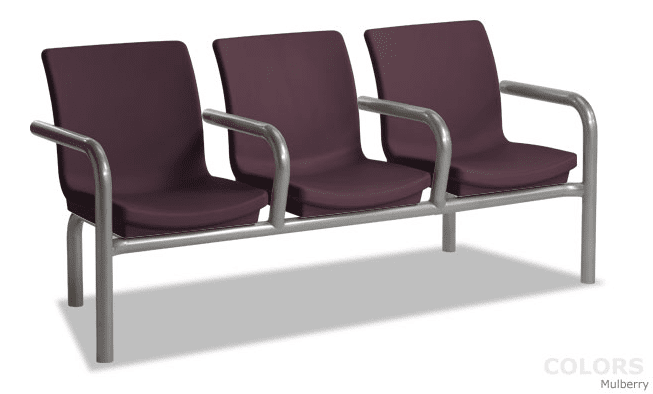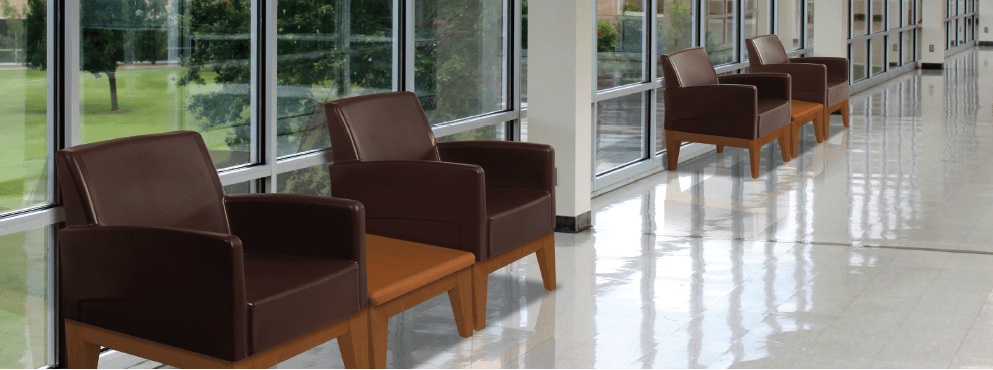Hospitals Look to Designers To Tackle Problem of Violence and Aggression in Emergency Departments
Design Competition Attracts Industry Elite to Develop Comprehensive Solutions
It is reported that in England hospital staff experience more than 150 incidents of violence and aggression everyday, especially in high-anxiety hospital ERs, which are called Accident and Emergency departments (A&E), in the U.K. These incidents, which range from swearing and verbal abuse to physical assaults, cost the country’s healthcare system more than 69 millions pounds annually (110 million U.S. dollars), and account for more than 55,000 acts of violence.
From the perspective of examining how the built environment can affect patient behavior, the country’s Department of Health and the U.K. Design Council came together in order to tap into the knowledge base and creative thinking of the country’s design community. A nation-wide design challenge was issued to solicit ideas for operational solutions that would design-out the human and financial costs of violence and aggression towards hospital staff.
In the initial research phase of the 2012 design competition entitled Reducing Violence and Aggression in A&E, studies found that incidents of violence and aggression, particularly in emergency departments, were found to stem from the following 9 key triggers:
- Clash of people/crowds
- Lack of progression/long waits
- Inhospitable environments
- Dehumanizing environments
- Intense emotions
- Unsafe environments
- Perceived inefficiency
- Inconsistent response
- Staff fatigue
As part of the project, each of those triggers was analyzed through every stage of the patient’s A&E journey: Arrival, Waiting, Treatment, and Discharge (or Admission). The imperative for each multi-disciplinary team of designers and healthcare practitioners was to explore and develop ways to neutralize the root causes of violence, moving away from the current reliance on containment or resolution measures after the fact. Teams were directed to target solutions that would be:
- Implementable
- Retrofittable
- Flexible
- Affordable
- Effective
- Universal
Of particular interest to the design team was the waiting room experience which was found to be uncomfortable and boring in most cases, causing a strong urge for people to want to leave the environment as soon as possible. To make the waiting rooms more comfortable the design team advised hospitals to implement changes with regard to waiting room colors, smells, light, sounds, seating, and temperature, in addition to procedural changes and a spectrum of communications/guidance initiatives.
Waiting Room Problems and Solutions – Part One
Stressor: Evidence of Illness
From a patient’s or service user’s point of view, seeing “evidence of illness” can make people feel tense and anxious. Emergency rooms quickly get dirty with people arriving from the outside, often dripping with blood or discharging other body fluids. The longer they stay, the more some people perceive that they are likely to catch someone else’s illness, adding to their distress. This distress increases if chairs are placed very close together, reinforcing feelings of being too close to other people with which they do not want to come into contact. During busy shifts there may be little time to clean up between uses, so surfaces must be ideal for quick, easy cleaning, with supplies that are close at hand.
Remedy: A clean, well cared for, and aesthetically pleasing space helps set expectation levels for behavior, so keeping surfaces clean and looking new can have a positive effect on patient conduct and help bolster confidence that the facility is well run, easing anxieties. Furniture selection is, therefore, very important. The Forte™ Series of furniture from Norix combines a designer look with supreme durability for daily use in challenging environments. Forte™ features a smooth, continuous polyethylene surface for easy cleaning, and is chemically resistant to blood, vinegar, urine, feces, salt solution, and chlorine solution. Ganging capability assures chairs and tables can be reconfigured in a number of ways. The ample width of the chairs creates a sense of a buffered space on both sides. Each of the styles is available with arms or armless. For inline seating, Gibraltar Beam Seating offers similar non-absorbent seats with a sturdy metallic silver steel frame. Contemporary styling helps create an attractive environment and elevates behavior expectations while arm units help define personal space. Easy to clean, maintenance friendly furniture is an important part of preserving an environment’s integrity.
Stressor: Noise
Sometimes distressed people in emergency rooms make a lot of noise which can be alarming and provoke anxiety in other patients. Sudden noises can set off a “startle reflex” which can lead to increased blood pressure and higher respiration rates for patients. Noisy environments make it difficult for staff to communicate with each other, causing them to resort to raised voices or shouting, which hastens fatigue. In addition, background noises such as the sound of beepers, alarms, machines, rolling carts, footfalls, closing doors, and HVAC systems all contribute to sound pressure levels which then, in turn, raise stress levels for hospital staff and patients alike.
Remedy: Design strategies to improve the acoustic environment can support patient well-being and privacy. Sound absorbing ceiling materials are highly effective, as are fully sealed and gasketed solid core doors. In large, open areas furniture or decorative panels made of sound-absorbing materials can also help to break up sound waves bouncing between walls.
Stay tuned for the next post in this series: Waiting Room Problems and Solutions – Part Two which will include stressors and remedies relating to Poor Environment, Vulnerability and Lack of Positive Distraction.
You can download the complete Design Council report Reducing Violence and Aggression in A&E.
Please share this post with others who are interested in how designers can tackle violence and aggression in emergency departments. Also check out emergency department furniture if you are looking to redesign your waiting rooms.

